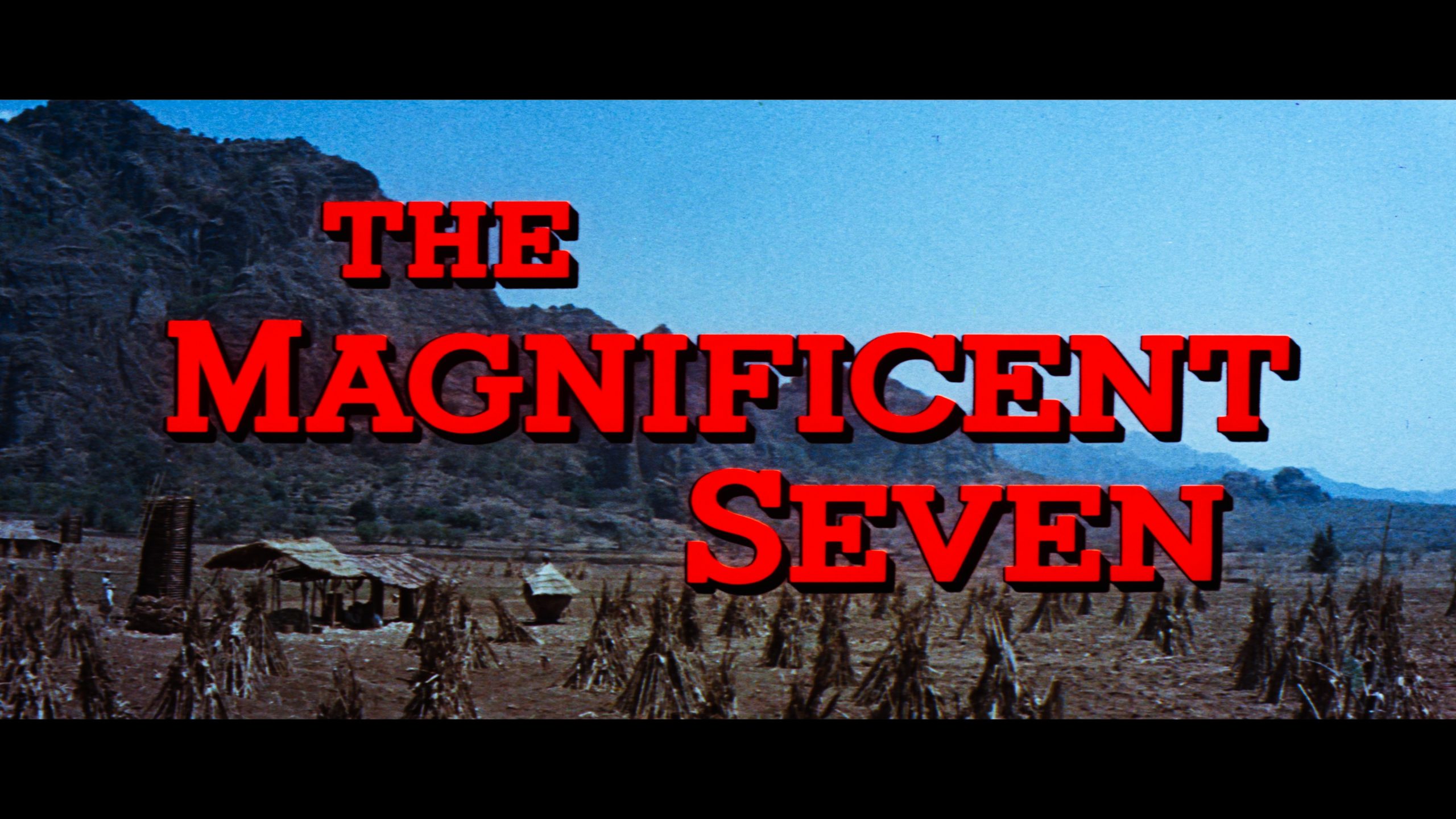The Magnificent Seven tells the story of a group of seven gunmen who are hired to protect a Mexican village from a group of bandits led by Calvera (Eli Wallach). Led by the enigmatic Chris Adams (Yul Brynner), the group consists of men with varying backgrounds and skills, including the sharpshooter Vin (Steve McQueen) and the knife-wielding Bernardo O’Reilly (Charles Bronson). The film follows their journey as they train the villagers to defend themselves and prepare for a final showdown with Calvera and his gang.
![The Magnificent Seven (1960) [4K UHD Review] 1 the magnificent seven 4k (2)](https://andersonvision.com/wp-content/uploads/2023/02/the-magnificent-seven-4k-2-3840x2160.jpg)
The Magnificent Seven kicked off the Westerns of the 1960s
One of the most significant contributions of The Magnificent Seven to 1960s Westerns is its ensemble cast. The film boasts an impressive lineup of actors, each bringing their unique talents to the table. Yul Brynner delivers a commanding performance as Chris Adams, the leader of the group, while Steve McQueen shines as the charismatic and skilled Vin. Charles Bronson brings a level of intensity to his role as Bernardo, and the rest of the cast, including James Coburn, Robert Vaughn, Brad Dexter, and Horst Buchholz, all give strong performances.
The ensemble cast is significant for several reasons. Firstly, it allows for the development of multiple characters and plotlines. Each member of the group has their backstory and motivations, which are explored throughout the film. This adds depth to the story and makes the audience invested in the characters’ fates. Secondly, the ensemble cast creates a sense of camaraderie and brotherhood, which is a common theme in Westerns. The Magnificent Seven explores the idea of men coming together for a greater cause, and the relationships between the characters are a highlight of the film.
![The Magnificent Seven (1960) [4K UHD Review] 2 the magnificent seven 4k (3)](https://andersonvision.com/wp-content/uploads/2023/02/the-magnificent-seven-4k-3-3840x2160.jpg)
Mexico goes Western
Another significant contribution of The Magnificent Seven to 1960s Westerns is its use of Mexican culture and themes. The film takes place in a Mexican village, and the characters are immersed in Mexican traditions and customs. This is a departure from the typical Western formula, which usually portrays Mexicans and Native Americans as villains or side characters. The Magnificent Seven gives agency to the Mexican characters and highlights their struggles and perseverance.
The film also explores themes of class and social hierarchy, which are common in Westerns. The Mexican villagers are oppressed and exploited by the bandits, and the Seven are hired to protect them. This creates a dynamic where the Seven are the saviors and the villagers are the helpless victims. However, the film also challenges this dynamic by showing the Seven as flawed and complex characters who are not immune to prejudice and biases. This adds nuance to the story and elevates it beyond a simple good vs. evil narrative.
![The Magnificent Seven (1960) [4K UHD Review] 3 the magnificent seven 4k (4)](https://andersonvision.com/wp-content/uploads/2023/02/the-magnificent-seven-4k-4-3840x2160.jpg)
Elmer Bernstein’s score is everywhere
The film’s music is also worth noting, particularly Elmer Bernstein’s iconic score. The score captures the spirit of the West and adds to the film’s epic feel. The main theme, with its triumphant brass and stirring strings, is instantly recognizable and has become a classic piece of film music.
However, despite its strengths, The Magnificent Seven is not without its flaws. One of the most significant criticisms of the film is its portrayal of Mexican culture. While the film is a significant departure from the typical Western formula, it still relies on some stereotypes and cliches. The Mexican villagers are portrayed as simple and uneducated, and the film’s treatment of their culture can be seen as exploitative.
![The Magnificent Seven (1960) [4K UHD Review] 5 The Magnificent Seven (1960) [4K UHD Review] 4](https://andersonvision.com/wp-content/uploads/2023/02/the-magnificent-seven-4k-5.jpg)
Final thoughts on The Magnificent Seven
Another criticism of the film is its pacing. While the action sequences are thrilling, the film’s plot can drag in places. Some of the character development and exposition can feel repetitive, and the film’s runtime could have been shortened.
The Magnificent Seven is a significant contribution to 1960s Westerns. Its ensemble cast, exploration of Mexican culture, and themes of social hierarchy and camaraderie make it a standout film in the genre. The action sequences and music are also notable strengths of the film. However, the film’s portrayal of Mexican culture and pacing are criticisms that cannot be ignored. While it may not be a perfect film, The Magnificent Seven remains a classic of the Western genre and is a must-watch for fans of the genre.
![The Magnificent Seven (1960) [4K UHD Review] 7 The Magnificent Seven (1960) [4K UHD Review] 6](https://andersonvision.com/wp-content/uploads/2023/02/the-magnificent-seven-4k-6-scaled.jpg)
Shout Factory kills it on their latest MGM 4K UHD
The Magnificent Seven looks amazing. However, I can see a few of the younger crowd having a problem with it. While the level of grain is true to form, the Magnificent Seven skews a little darker during night scenes. But, it holds true to form with the Sturges and period MGM movies we’ve seen come to 4K UHD and recent Blu-rays so far.
The DTS-HD 5.1 master audio track is comparable to the last Blu-ray release. However, the big to-do is over the special features ranging from commentaries to featurettes and the original trailers. After repeating viewings of the 2160p transfer, I have to say that the new 2022 restoration is noticeable.
However, I keep finding problems with recent color grading standards. What looks great during the day is often muddled for any scene darker than most. Much was made of the source being from a pre-existing 4K source, so I’m guessing it’s something MGM made for a premium cable service. Oh well, still worth checking out for fans.

![The Return of Swamp Thing (1989) [4K UHD review]](https://andersonvision.com/wp-content/uploads/2023/03/return-of-swamp-thing-4k-2-scaled.jpg)
![Kubo and the Two Strings (2016) [4K UHD Review]](https://andersonvision.com/wp-content/uploads/2023/02/kubo-and-the-two-strings-4k-1-scaled.jpg)
[…] and the Two Strings and The Boxtrolls represent the second wave of these Laika Steelbook 4K UHD releases and they are killer. For those that haven’t picked up the films on prior releases, […]